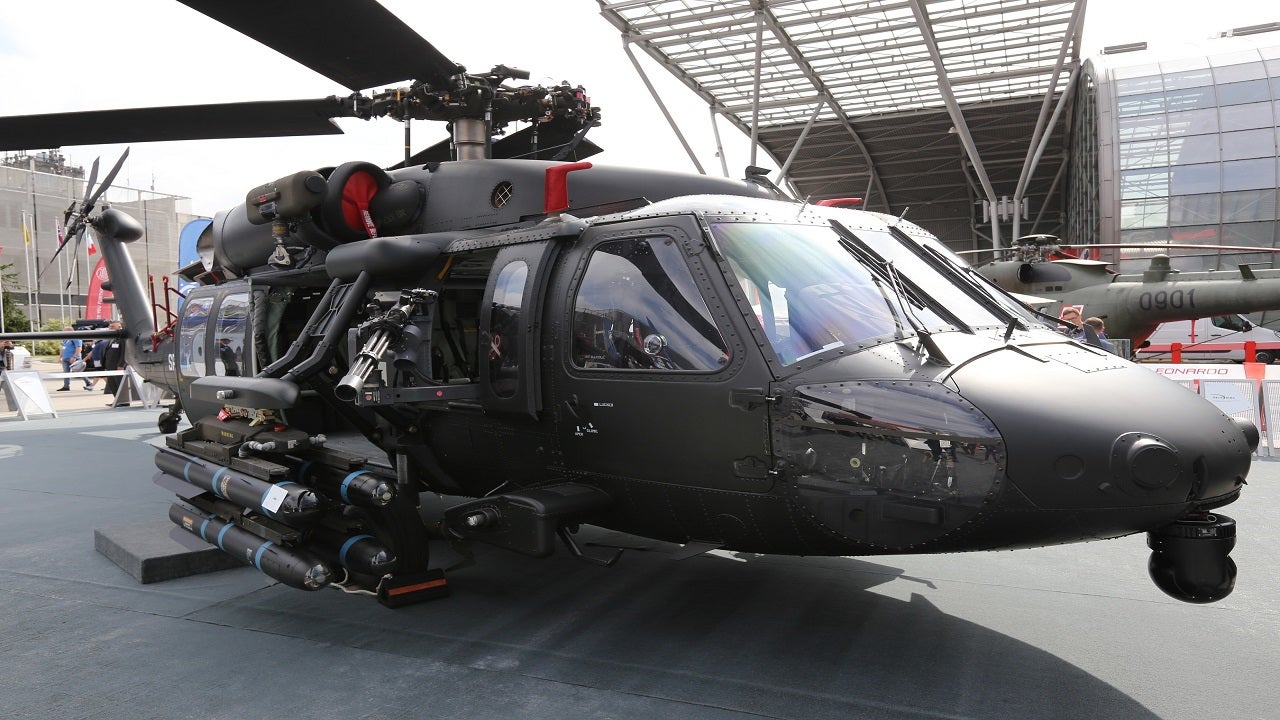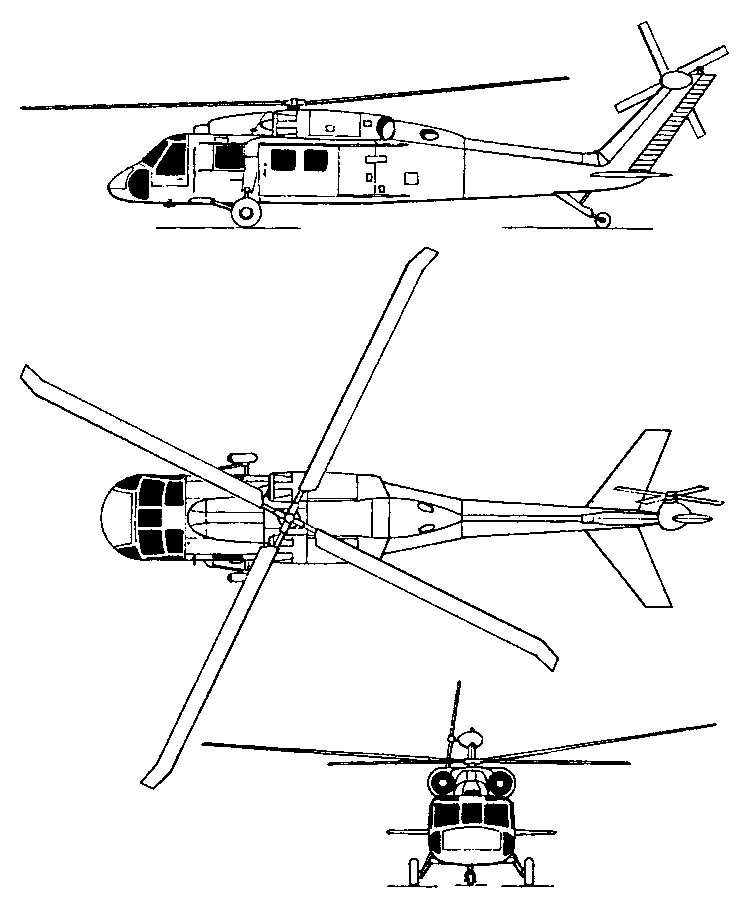Sikorsky S 70: Reinventing Tactical Workflow with Cutting-Edge Modern Technology
Sikorsky S 70: Reinventing Tactical Workflow with Cutting-Edge Modern Technology
Blog Article
High-Performance Multi-Role Rotorcraft Featuring Advanced Cockpit Technologies and Integrated Sensing Unit Equipments
The world of rotorcraft technology has seen noteworthy innovations in recent times, specifically in the realm of high-performance multi-role rotorcraft outfitted with cutting-edge cabin modern technologies and seamlessly integrated sensing unit systems. These advancements have not just augmented the operational abilities of rotorcraft but have actually additionally dramatically influenced contemporary air travel operations on numerous fronts. From boosted mission flexibility to improved functional effectiveness, the convergence of innovative cabin innovations and integrated sensing unit systems has ushered in a new era of opportunities for rotorcraft applications. In the complying with discussion, we will certainly explore the advancement of rotorcraft modern technology, look into the world of sophisticated cabin advancements, and take a look at the implications of incorporated sensor systems on the functional flexibility and performance of contemporary rotorcraft.
Evolution of Rotorcraft Innovation
The advancement of rotorcraft innovation has actually been noted by considerable improvements in aerodynamics, products, and propulsion systems, shaping the abilities and performance of modern rotorcraft. In addition, innovations in propulsion systems, consisting of a lot more powerful engines and innovative propulsion technologies, have made it possible for rotorcraft to attain greater altitudes, faster rates, and better payloads.
These advancements have not just changed the abilities of rotorcraft but have actually likewise expanded their applications throughout different industries, including army, industrial, and emergency solutions. The constant evolution of rotorcraft modern technology continues to drive development in the area, pressing the boundaries of what is feasible and shaping the future of upright flight.
Advanced Cabin Innovations
Building upon the fundamental advancements in the rules of aerodynamics, products, and propulsion systems, the realm of rotorcraft modern technology now changes focus towards pioneering Advanced Cabin Innovations. The assimilation of innovative innovations within the cabin atmosphere plays an essential duty in enhancing the functional capabilities, security, and efficiency of contemporary rotorcraft. sikorsky s 70. Advanced Cabin Innovations include a vast range of attributes developed to give pilots with improved situational recognition, streamlined information management, and user-friendly control user interfaces
One of the vital improvements in cockpit style is the execution of glass cockpits, which replace typical analog gauges with high-resolution screens. These electronic systems offer customizable designs, real-time information assimilation, and enhanced readability, making it possible for pilots to accessibility vital details at a glance. Progressed avionics systems, such as fly-by-wire controls and increased fact screens, are changing how pilots communicate with the airplane, permitting for accurate control and improved decision-making abilities.


Integrating sophisticated cockpit developments not only boosts pilot performance but additionally adds to overall goal efficiency and security in intricate functional environments. By leveraging state-of-the-art modern technologies within the cockpit, rotorcraft manufacturers are establishing new standards for functional excellence and goal success.
Integrated Sensor Equipments
With the development of rotorcraft technology, the combination of advanced Integrated Sensing unit Systems has actually ended up being paramount in boosting operational effectiveness and safety. These Integrated Sensing unit Systems encompass a large array of technologies that supply vital information for different features such as navigation, security, targeting, and ecological tracking. By seamlessly incorporating sensors like radars, video cameras, lidar, and infrared systems right into rotorcraft, drivers can take advantage of improved situational recognition, boosted mission abilities, and lowered pilot workload.
One secret benefit of Integrated Sensing unit Systems is their capability to collect real-time information and provide actionable understandings to pilots and goal operators. For instance, progressed radar systems can spot and track targets over cross countries, permitting for very early threat detection and efficient action preparation. Furthermore, integrating infrared and electro-optical cameras enables rotorcraft to conduct reconnaissance and surveillance missions navigate here with precision and accuracy.
Basically, the combination of innovative sensing unit modern technologies right into rotorcraft not just boosts functional efficiency however likewise contributes considerably to overall mission success and crew security. As rotorcraft continue to evolve, the function of Integrated Sensing unit Systems will certainly stay at the leading edge of technology in the aerospace market.
Functional Flexibility and Effectiveness
Enhancing operational versatility and performance in rotorcraft is an all-natural progression from the integration of advanced Integrated Sensing unit Solutions. By leveraging the understandings and data provided by these sophisticated sensing unit systems, rotorcraft can optimize their efficiency throughout various missions and settings.
Operational convenience incorporates the capability of rotorcraft to adapt to various roles and circumstances effectively. With advanced cabin technologies and incorporated sensor systems, rotorcraft can flawlessly shift in between tasks such as search and rescue, clinical emptying, security, and much more. This convenience improves the rotorcraft's capacity to satisfy diverse operational requirements without requiring considerable reconfiguration.
Effectiveness in rotorcraft procedures is important for optimizing mission efficiency and source usage. Integrated sensing unit systems play a pivotal duty in enhancing operational performance by offering real-time information on weather, surface mapping, target monitoring, and much more. This information makes it possible for pilots to make informed choices promptly, optimize flight paths, preserve gas, and enhance general goal performance.
Effect On Modern Aeronautics Workflow

In addition, the combination of advanced sensors facilitates improved goal planning and implementation, allowing rotorcraft to perform a wide variety of jobs with improved accuracy. From search and rescue procedures to aerial firefighting and police missions, the capacities of modern rotorcraft outfitted with sophisticated cabin innovations and incorporated sensor systems are unparalleled.
Additionally, the influence of these developments expands beyond operational performance to cost-effectiveness and sustainability. By optimizing flight paths, gas consumption, and upkeep timetables, high-performance rotorcraft equipped with sophisticated cabin technologies and sensors add to lowering operational costs and environmental effect, making them indispensable possessions in contemporary aeronautics procedures.
Conclusion
To conclude, the high-performance multi-role rotorcraft with innovative cabin technologies and integrated sensor systems represents a considerable advancement in aviation technology. These developments improve functional adaptability and performance, ultimately impacting modern air travel operations Source in a favorable means. The combination of these advanced modern technologies enables improved capacities and performance in numerous goal situations, showcasing the proceeded improvement of rotorcraft innovation in the air travel market.
The realm of rotorcraft technology has seen notable advancements in current times, specifically in the world of moved here high-performance multi-role rotorcraft geared up with advanced cockpit modern technologies and flawlessly incorporated sensing unit systems. From boosted objective flexibility to improved functional effectiveness, the convergence of advanced cabin innovations and integrated sensing unit systems has ushered in a new period of opportunities for rotorcraft applications. In the following conversation, we will certainly explore the advancement of rotorcraft innovation, delve right into the realm of advanced cabin developments, and examine the effects of integrated sensing unit systems on the operational versatility and performance of modern rotorcraft.

Report this page